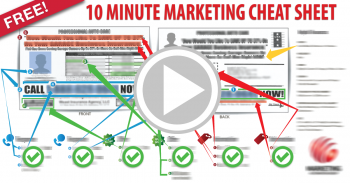- You are here:
- Home »
- Blog »
- Business »
- New Year—New Opportunity to Make Your Data Work for You
New Year—New Opportunity to Make Your Data Work for You
 Happy New Year! Is this the year you want to make a million? It is all about numbers.
Happy New Year! Is this the year you want to make a million? It is all about numbers.
Sound confusing? Don’t worry. In the next couple of blogs, we’ll talk about what numbers and Big Data mean, and get you on the road to a more profitable 2016.
If we haven’t met, I am an entrepreneur and business growth authority who built several successful businesses. Now I consult and run business groups to help other small business owners learn how to work smarter—not harder.
The beginning of a new year is a great time to take stock of what works—and what does not work—for your business. It is not a good time to throw money at whatever marketing method catches your eye. As I talked about before, shiny object syndrome can cost a lot of money, without offering much in return—especially when you are determined to make a change in your business.
What am I talking about? Let me tell you about the most common ways people lose money trying to find new clients or customers:
- Print ads and expensive brochures: Think a general print ad is going to help you gain more business? It might, but it probably won’t unless you know your message, and are delivering that message to folks who are interested in what you have to sell. The days of large runs of expensive printed brochures are done. Order less and develop your website.
- Online advertising: A specialty by itself, Facebook and other online ads may not pay off. Ad blocking is popular. Unless you have the numbers at the end of the day to show the campaign was effective, you are pouring money into the street.
- Fly-by-night marketing help: So you know you need to brand, or rebrand, your business. Or, you are painfully aware that you need to kick-start your marketing capabilities. You meet someone, who knows someone, and can help you with a boilerplate marketing kit. It fails, and you are out the $5 or $10K you really needed to identify, attract, and cultivate new leads.
You don’t get the customers because you threw your marketing budget at the crowd. There are at least two ways to make money. One is putting the right plan in place to ensure your service or product is continually reaching new potential leads. The other is making smarter use of the money already present, or already being spent to run your business.
We’ll talk about getting new leads first.
How does data get the customers you need?
A lot of entrepreneurs recoil at the word “data.” What is it? It is knowledge. Knowledge of who might buy your product or service, and what they will pay for it. It is knowledge of the economics and geography of where you are trying to do business—whether it is local, or on the web. It is knowledge that gives you the edge as you cultivate a lead into a converted, long-term client. You need data.
Data-driven organizations make more money, because they have the knowledge of where to place their confidence—and their marketing budget—to generate business. There are a couple of different kinds of data, including:
- First-party data: First party data is gold. This is free information you own and control that results from your own efforts to capture contact, demographic, and other information about your clients, and customers. When a customer engages your services, it is routine to collect that information within the parameters of the privacy policy of your business, or website.
- Second-party data: Much lesser known, second-party data is likely to become a marketing powerhouse in the next couple of years. As small business owners get smarter about cultivating their first-party data, and run into privacy and quality issues with third-party data, entrepreneurs are turning to second-party data.
What is it? Second-party data is just the first-party data of someone else. When you share your first-party data with a unique business partner, you gain access to information that can help you refine your customer profile and better target offers your customers receive online, or via mobile. Since you are sharing, there is no cost to obtain the information. For example, you might share, within the limits of your privacy policy, information with a nearby retailer who serves your desired customers. By sharing high-quality information, you, and your partner, develop a valuable marketing cross-channel that is better than what either of you had alone.
- Third-party data: Gained from behavioral, statistical, and other types of modeling, third-party data is aggregate information from a number of sources. Sometimes expensive, sometimes cheap, there is plenty of third-party data to be found. While the seller may guarantee the data suits your audience segment—the information may no longer be fresh, or accurate.
You also need a way to manage and cultivate your data. You can use any of a number of customer relationship management (CRM) systems. I have a lot of success with Infusionsoft.
When you want to put the right plan in place, or develop better marketing and business process—call me at (585) 633-7563, or check out one of my groups. Starting this year, my goal is to make you a millionaire.
Yours in profit,
Bob Britton



